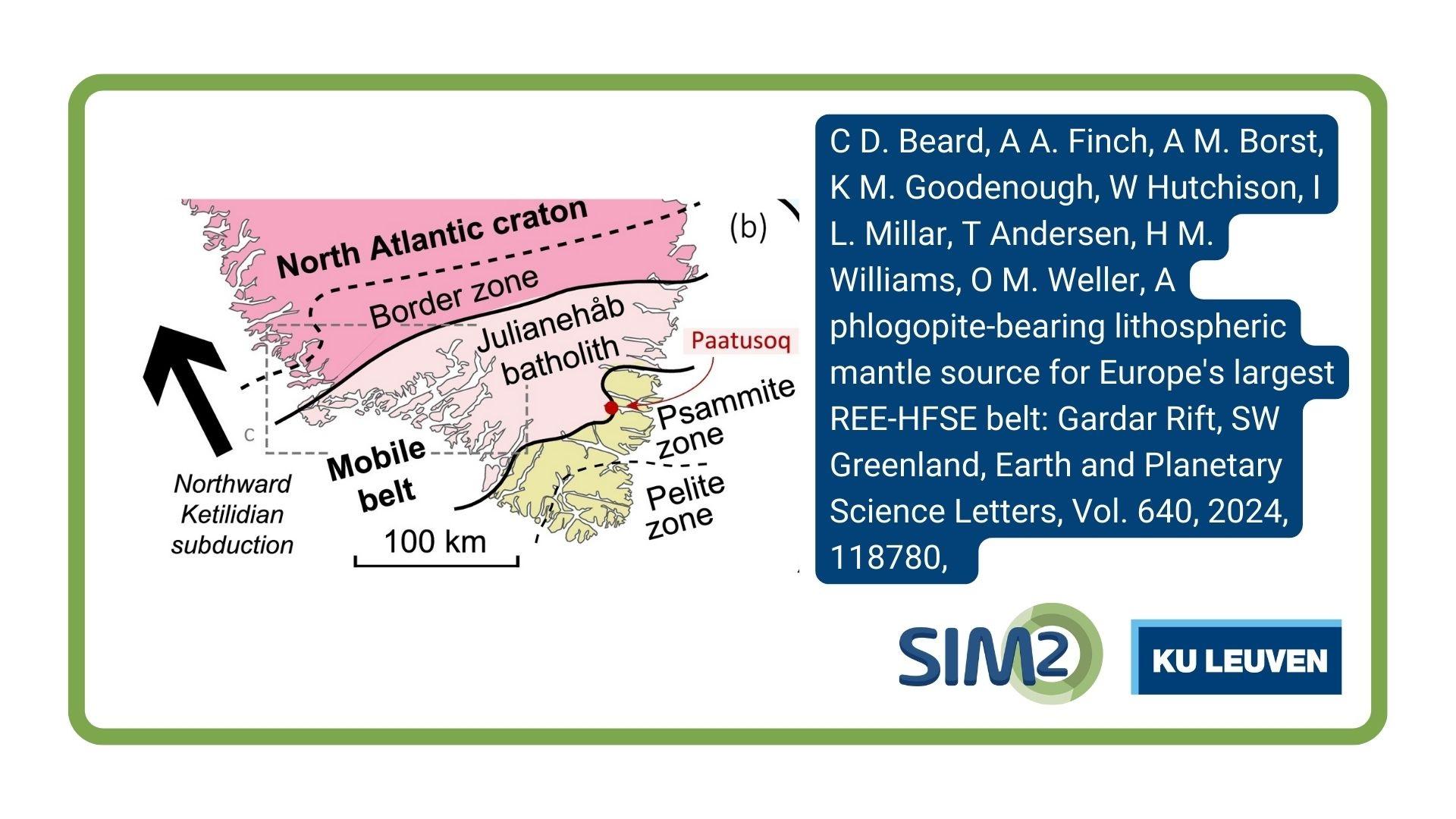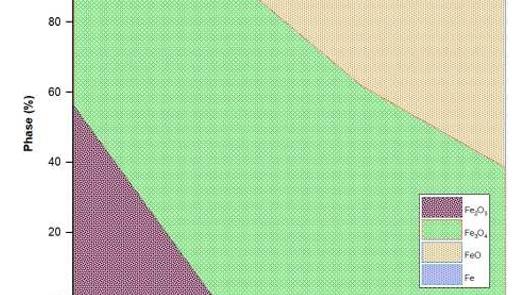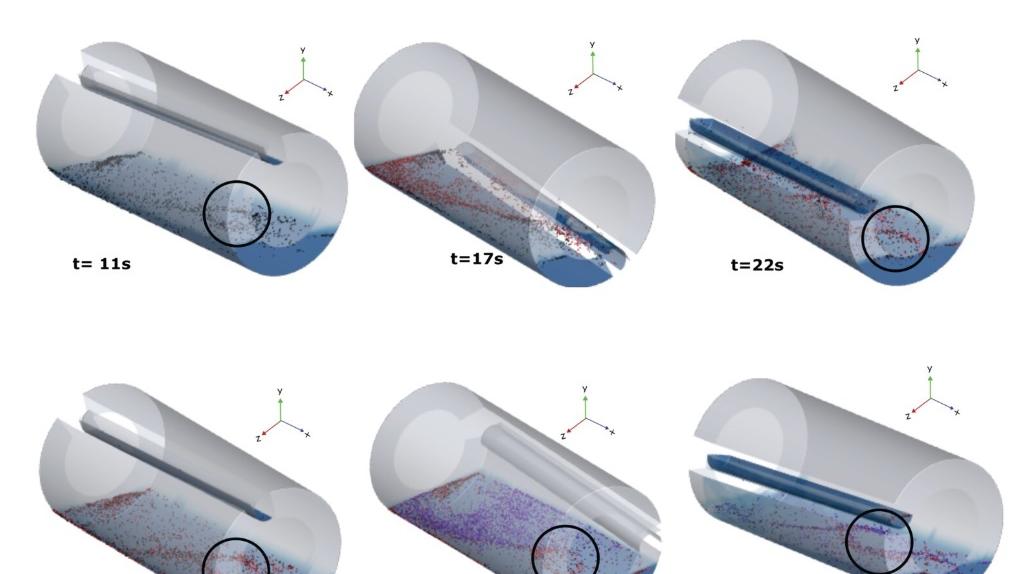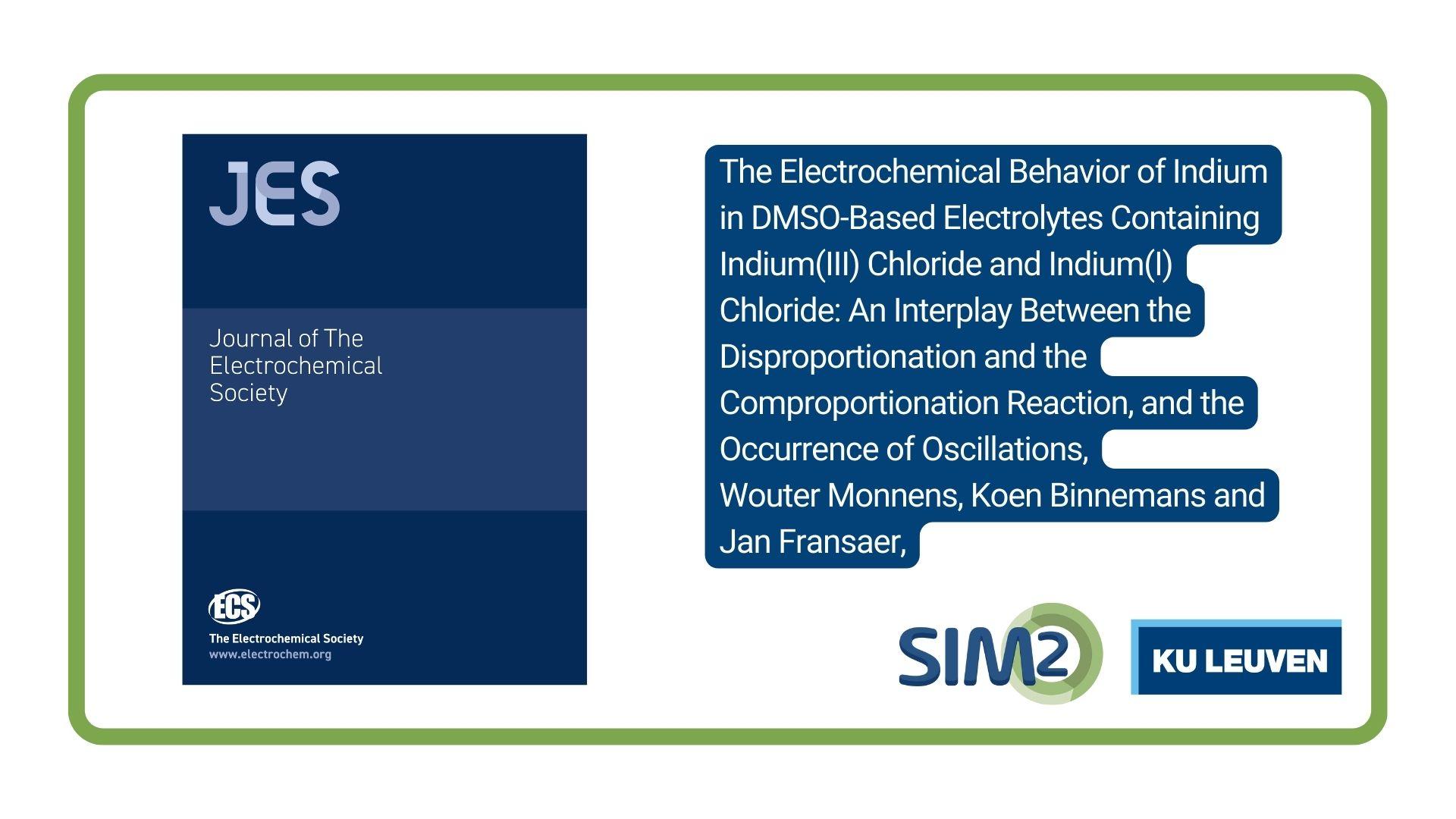Anouk Borst of the Department of Earth and Environmental Sciences, KU Leuven, together with colleagues from Belgium, Norway and the UK, has a new publication on the subject of a phlogopite-bearing lithospheric mantle, Europe’s largest resource for rare-earth elements and high-field-strength elements, in Gardar Rift, southwest Greenland. The letter is published in the August issue of Earth and Planetary Science Letters.
Alkaline-silicate complexes host some of the world's largest resources of rare-earth elements and high-field-strength elements (REE & HFSE) and represent the most fractionated magmatic systems on our planet. Geochemical evidence indicates that they are mantle melts, but while various studies highlight a role for lithospheric mantle, we do not know the precise origin of their contained REE and HFSE, and whether enrichment of the mantle source for these magmas can be attributed to specific geodynamic processes or events.
We present new Nd-Hf isotope measurements ( /
/  &
&  /
/  ) made by LA-MC-ICP-MS, as well as a compilation of existing isotopic data for a suite of alkaline igneous rocks from the Gardar Province, a Mesoproterozoic continental rift in southern Greenland. Neodymium and hafnium isotopes are unaffected by crystal fractionation and can directly fingerprint the source of REE and HFSE. The dataset covers both phases of Gardar magmatism (1325–1261 and 1184–1140 Ma) and incorporates mafic dyke swarms and km-scale intrusive complexes, including Ilimmaasaq (Ilímaussaq) and Motzfeldt, which host some of the world's largest REE and HFSE deposits. The majority of Gardar complexes have a narrow range of positive median initial εNd (0 to 3.3) and εHf values ( 0.2 to 6.0). Only two granite intrusions and the Eriksfjord basaltic lavas have crustally contaminated Nd-Hf isotope compositions, with the vast majority of Gardar igneous rocks preserving the isotope signature of their mantle source. Considering the diversity of rock types in the Gardar Province, initial εNd –εHf compositions are remarkably homogeneous, indicating a derivation of the Gardar's REE and HFSE from a laterally-extensive mantle melt source.
) made by LA-MC-ICP-MS, as well as a compilation of existing isotopic data for a suite of alkaline igneous rocks from the Gardar Province, a Mesoproterozoic continental rift in southern Greenland. Neodymium and hafnium isotopes are unaffected by crystal fractionation and can directly fingerprint the source of REE and HFSE. The dataset covers both phases of Gardar magmatism (1325–1261 and 1184–1140 Ma) and incorporates mafic dyke swarms and km-scale intrusive complexes, including Ilimmaasaq (Ilímaussaq) and Motzfeldt, which host some of the world's largest REE and HFSE deposits. The majority of Gardar complexes have a narrow range of positive median initial εNd (0 to 3.3) and εHf values ( 0.2 to 6.0). Only two granite intrusions and the Eriksfjord basaltic lavas have crustally contaminated Nd-Hf isotope compositions, with the vast majority of Gardar igneous rocks preserving the isotope signature of their mantle source. Considering the diversity of rock types in the Gardar Province, initial εNd –εHf compositions are remarkably homogeneous, indicating a derivation of the Gardar's REE and HFSE from a laterally-extensive mantle melt source.
Several Gardar systems have low initial εHf for a given εNd ( εHf to -9.7), a distinctive signature as few geological processes decouple the Nd and Hf isotope systems. The decoupled Nd-Hf isotope signatures are consistent with contributions from isotopically-matured phlogopite-bearing metasomatic veins (commonly known as PIC: phlogopite-ilmenite-clinopyroxene) in the lithospheric mantle. The metasomatising fluids that formed these source rocks were introduced via Palaeoproterozoic subduction, but the Gardar isotopic signatures indicate that REE and HFSE enrichment of these metasomes was not derived from subducted sediment; instead it is likely that metals were scavenged from the mantle wedge overlying the ancient subduction zone. The Gardar Nd-Hf isotope evolution trends overlap with a global compilation of kimberlites through time and allow us to tie the origin of the PIC metasomes to the regional geodynamic history of South Greenland. We identify PIC metasomes as a key metal source for the Gardar and by extension perhaps other REE-mineralised igneous provinces globally.
εHf to -9.7), a distinctive signature as few geological processes decouple the Nd and Hf isotope systems. The decoupled Nd-Hf isotope signatures are consistent with contributions from isotopically-matured phlogopite-bearing metasomatic veins (commonly known as PIC: phlogopite-ilmenite-clinopyroxene) in the lithospheric mantle. The metasomatising fluids that formed these source rocks were introduced via Palaeoproterozoic subduction, but the Gardar isotopic signatures indicate that REE and HFSE enrichment of these metasomes was not derived from subducted sediment; instead it is likely that metals were scavenged from the mantle wedge overlying the ancient subduction zone. The Gardar Nd-Hf isotope evolution trends overlap with a global compilation of kimberlites through time and allow us to tie the origin of the PIC metasomes to the regional geodynamic history of South Greenland. We identify PIC metasomes as a key metal source for the Gardar and by extension perhaps other REE-mineralised igneous provinces globally.





